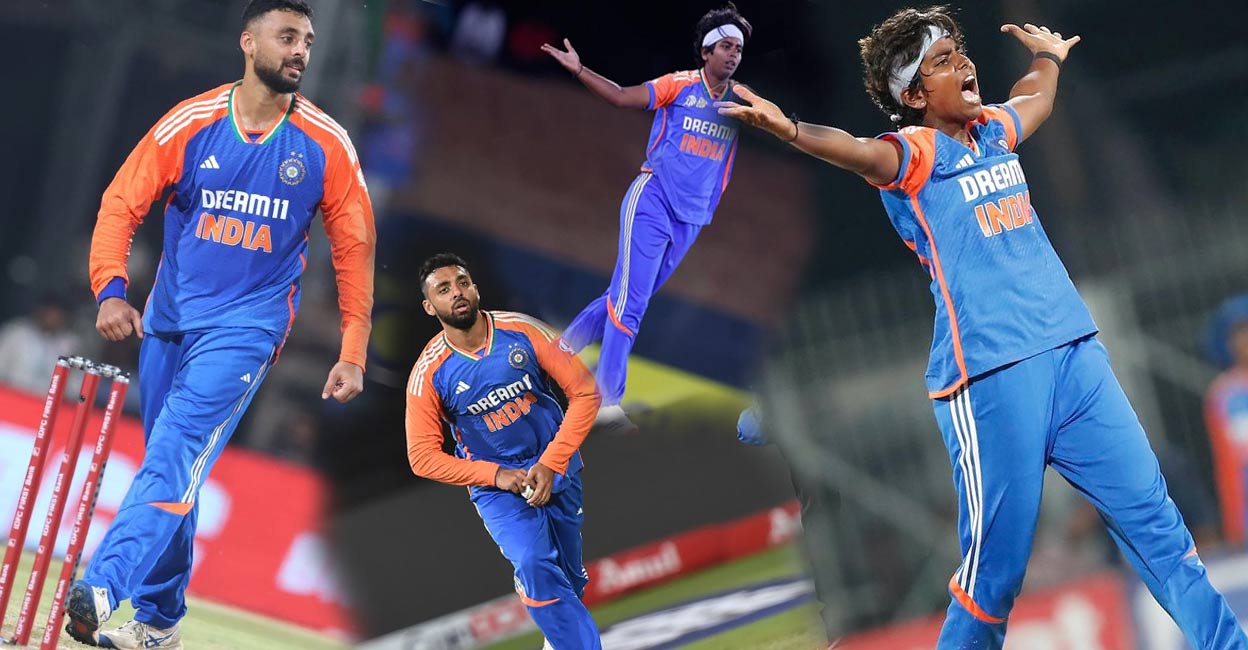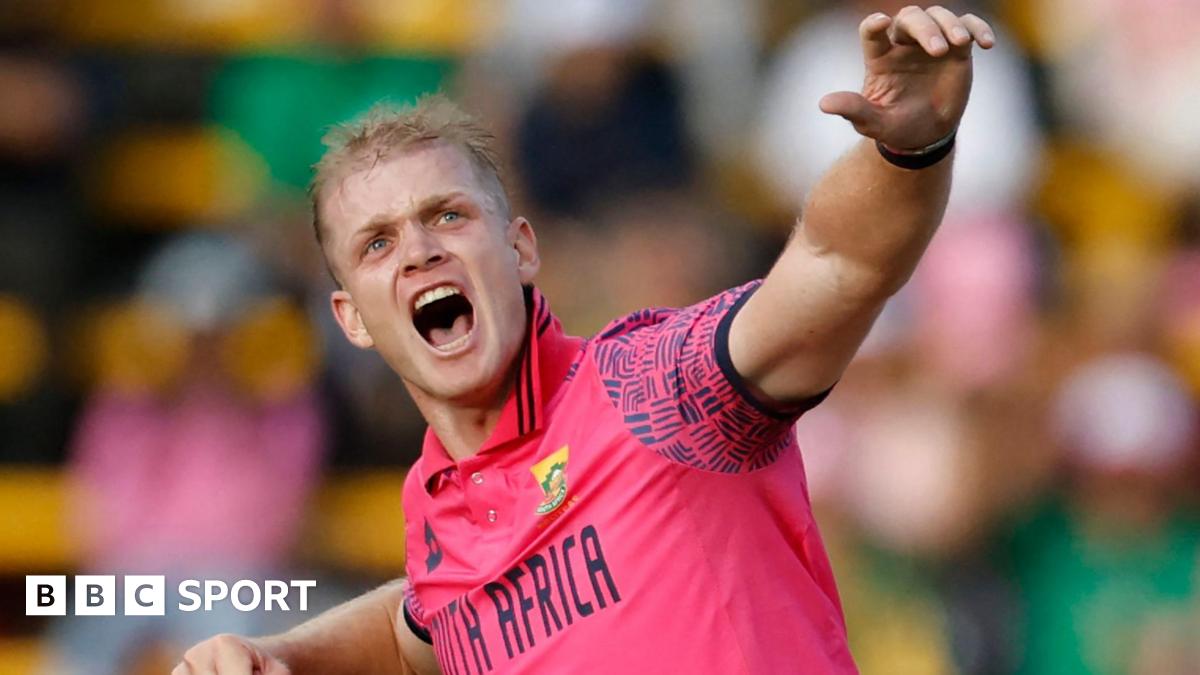Varun, Arundhati defy odds, return successfully to top-flight cricket

The last few weeks saw a phenomenon that happens only occasionally in India’s highly competitive cricket arena. Reaching the highest level in any sports discipline requires hard work, absolute dedication and commitment, and tons of prodigious talent. Sportspersons who have attained this level insist that it is even more difficult to survive at the top level as that requires the ability to keep improving and improvising on a near constant basis, in addition to sharpening all the ingredients needed to reach there.
It is not in dispute that it is far more challenging and nearly impossible to stage a comeback after one has been thrown out from the big stage, for whatever reasons. The past couple of months saw two Indian cricketers—Varun Chakravarthy and Arundhati Reddy—defying this dictum by making a successful return to the national squad more than three years after they played their last international match.
Varun Chakravarthy, the right-arm leg spinner, last played an international game in 2021 before being dropped from the side. He had meagre returns to show for his efforts while playing for his country 3 years ago, picking up only 3 wickets in 6 matches. He worked hard and improved his bowling, which showed in his tally of wickets in IPL during the last 2 seasons.
There was some consternation when he was brought back to the national squad for the home series against Bangladesh, as, at 33 years, age is also not on his side. But he bowled with flair and distinction in the games against Bangladesh and justified the trust placed on him by the national selectors. He followed this with an outstanding performance during the away series against South Africa, where he picked up 12 wickets in four games, including a haul of 5 for 17 in the second match.
Arundhati, a right-arm medium pacer, performed the star turn for India in the International Cricket Council (ICC) T20 World Cup match against Pakistan by picking up 3 crucial wickets. After making her debut for the country in 2018, she found herself in the wilderness for more than three years since July 2021.
She went through a bad phase and even had to resign her job and sever her connection with Railways as it was not taking her anywhere. She shifted base to Kerala where she came under the tutelage of Biju George, who was also her coach for Delhi Capitals, her side in the Women’s Premier League (WPL). Her comeback was through the WPL route where she performed with distinction and earned a call to the national side for One Day Internationals (ODI’s).
Both Varun and Arundhati worked long hours and made suitable changes to their bowling to become more effective before they started reaping the rewards. Varun started imparting more “overspin”, where the ball is given a forward spin at the time of release so that it dips before landing and bounces awkwardly, rather than depending solely on “sidespin”, where the ball turns sideways after hitting the ground. This addition to his repertoire helped him to become a more attacking bowler in the shortest version of the game and is reflected in his excellent returns.
Arundhati focused on becoming a complete bowler who could bowl at all stages of the game instead of using only the new ball. This helped her become an effective “death bowler,” which gave her skipper more bowling options in the crucial final stage of the innings.
These comebacks bring to mind stories of other cricketers who braved rejection to fight hard and get back into the national side in the previous years.
The most prominent among the great players of the yore who managed to come back to the national side on multiple occasions is Mohinder Amarnath, who did this no fewer than three times.
Mohinder debuted in the last of the home series against Australia in December 1969, played at Chennai. He was chosen as an opening bowler, and he stunned everyone by clean-bowling Keith Stackpole, the Aussie opener, and Ian Chappell, their best batsman, in the second innings. One would have expected Mohinder to be an automatic choice in the national side for the next series, which was against West Indies in 1971.
But not only was he not selected for this tour, he was made to wait for more than six years before playing his next test, which was against New Zealand at Adelaide in January 1976.
Mohinder quickly cemented his place in the side during the twin tour to New Zealand and West Indies in 1976, where he grew in stature as a batsman, ultimately moving up to no: 3 in the batting order. But after being in and out of the side for the next three years, he found himself out on the cold after failing in the series against Australia in 19798, when he fell on his wicket while attempting to hook a bouncer from Rodney Hogg.
This time, the break from international cricket was longer as selectors refused to consider his case despite a string of tall scores in domestic first-class cricket. It was only in 1982 that the selectors finally relented and decided to bring him back to the squad. Mohinder grabbed this opportunity with both hands and showed to the cricketing world his real mettle with the willow. In the tours to Pakistan and West Indies, who possessed the most fierce and hostile bowling attacks the world has ever seen, he scored more than 1,000 runs, a performance that led to Viv Richards acknowledging him as the best batsman in the world at that time. He continued his brilliant form into the 1983 World Cup and won the Man of the Match award in both semifinals and finals. In fact, his performance with the bat and ball were critical factors that helped India win these crucial games and lift the trophy.
But fate had reserved a drastic turn of events for him. From a position at the pinnacle of the cricketing world, he tumbled to the pits during the cricket season that followed, where he could score only 1 run in six completed innings’ in the series against West Indies in 1983-84 and lost his place in the side. The disgrace of being dismissed without scoring on 5 times and scratching just a single on the sixth occasion would have destroyed any other cricketer.
But Mohinder managed to recover even from these depths and struck a century in the first test of the next season, when India toured Pakistan. He continued to be a member of the national side till he was again dumped by the selectors in 1988, despite being fully fit and amongst runs. This time, the disappointment was too great for Mohinder, who chose to call it a day after giving a mouthful to the selectors!
Saurav Ganguly is another cricketing great who fought back to the national side after being dropped on more than one occasion. Ganguly was member of the side that toured Australia in 1991-92, where he got an opportunity to play only in a single ODI. Worse, his attitude was resented by the seniors in the squad, who thought he was disrespectful towards them. Hence, no tears were shed when he lost his place in the squad after this tour. Ganguly went back to the rough and tumble world of domestic cricket and forced his way back the squad for tour to England in 1996. He silenced his critics by striking two consecutive centuries in his first two tests and soon became one of the pillars of Indian middle order.
After being elevated to the captaincy in 2000, Ganguly brought in an amazing change in the side’s attitude, injecting it with a “killer instinct” that it had lacked hitherto. The side soon soon rose to become one of the best in international rankings, winning series’ on foreign soil with ease and even giving the mighty Aussies a run for their money. But a spat with Greg Chappell, who was appointed coach on Ganguly’s recommendation, led to the latter losing the captaincy and his place in the side. Many observers wrote the epitaph of Ganguly’s career at this juncture, but the “Bengal tiger” was not done. He played domestic cricket and bounced back into the national side on the strength of tall scores there. Ganguly retired from international cricket only at the time of his own choosing, at the end of the series against Australia in 2008.
Some more players managed to get back to the national side after spending many years in the wilderness. Ashish Nehra and Dinesh Karthik are two examples of cricketers who refused to give up and were rewarded for their determination and fortitude. But numerous are those who gave up without much of a fight when they were relegated back to the first-class level. Even prodigies like Vinod Kambli, Sadanand Viswanath and Laxman Sivaramakrishnan and hardened cricketers like Sanjay Manjrekar could not cope with this southward shift in their fortunes and threw in the towel. The tenacity and perseverance to fight and overcome adversity was lacking in in these cricketers.
This difficulty in staging a comeback after being dropped from the national side is an uniquely Indian phenomenon. Some months ago a post had appeared in social media informing that Allan Border, Steve Waugh and Shane Warne were all dropped once from the national side for poor performance and made their way back through performances in domestic first class cricket. However, the gulf between domestic and international cricket used to be so wide in India that most players who experienced the taste of the latter found it difficult to the conditions prevailing in the former. Manjrekar made public his lament about the difficulties he faced while playing in hot and humid conditions in small towns before empty stands, with little coverage by the media. The blow to ego is invariably severe and many, like Manjrekar, despite their love for the sport, decide to leave it rather than stick around in the hope that one more chance to get into the international arena is round the corner.
However, the advent of Indian Premier League (IPL) and WPL, its counterpart in women’s cricket, has served to minimise this gulf to some extent. These games are played before packed stadia, attract considerable media attention and the presence of overseas players lend it an international flavour as well. This environment has made it possible for Varun Chakravarthy and Arundhati Ready to stage a comeback to the national side after a gap of three years and more.
Congratulations to Varun and Arundhati for showing the resilience and gumption to keep fighting and win back their places in the national teams!
Wishing them both continued success at the international level.
Related
‘Listen from one ear, ignore from the other’: Former India…
India's Rohit Sharma and Mohammed Shami (AP Photo) NEW DELHI: Former wicketkeeper-batter Syed Kirmani has expressed his opinion that experienced fast bowler Mo
India faces New Zealand in budding rivalry at Champions Trophy…
State AlabamaAlaskaArizonaArkansasCa
ICC and Unilever announce landmark partnership on International Women’s Day…
The two-year partnership, kicking off at this year’s Women’s Cricket World Cup in India and running until the end of 2027, marks the world cricket governing
IPL 2025: Mumbai Indians sign Corbin Bosch as replacement for…
Mumbai Indians have signed South Africa all-rounder Corbin Bosch as a replacement for his injured countryman Lizaad Williams for this year's Indian Premier Leag











